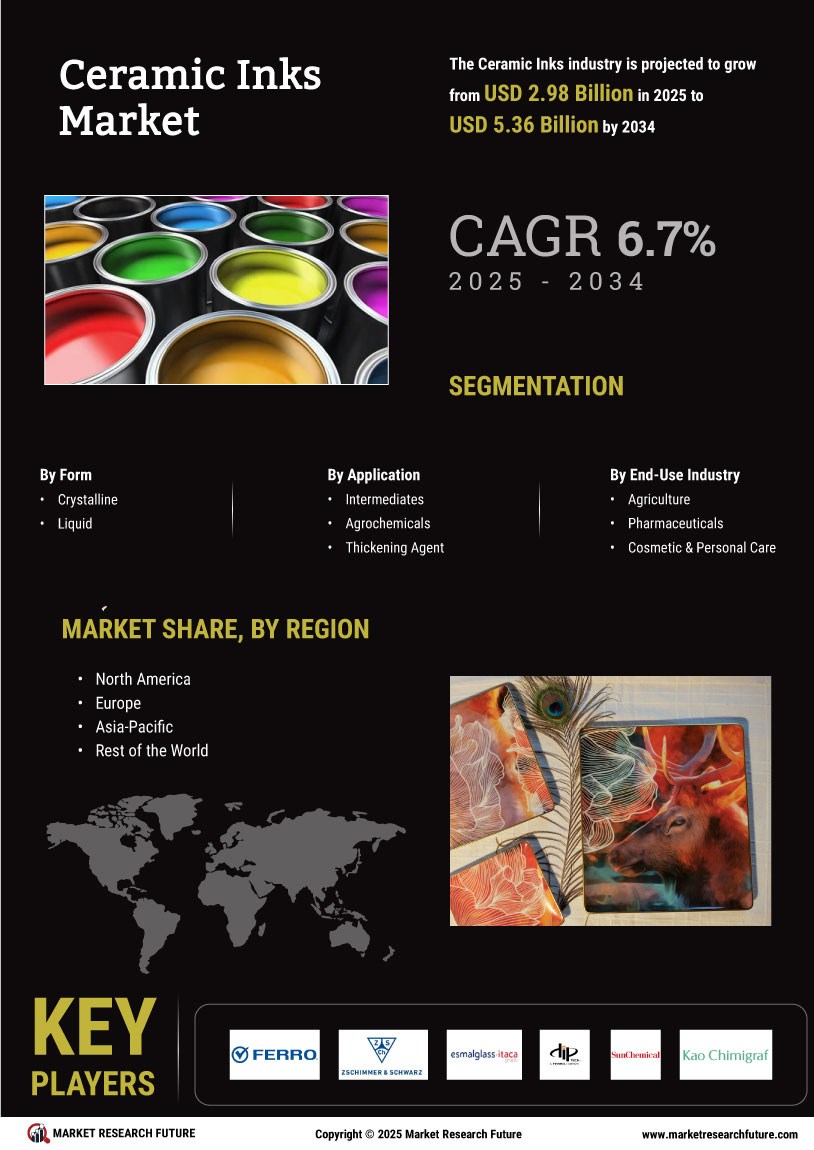Leading market players are investing heavily in research and development in order to expand their product lines, which will help the Ceramic Inks Market, grow even more. Market participants are also undertaking a variety of strategic activities to expand their footprint, with important market developments including new product launches, contractual agreements, mergers and acquisitions, higher investments, and collaboration with other organizations. To expand and survive in a more competitive and rising market climate, the Ceramic Inks industry must offer cost-effective items.
Manufacturing locally to minimize operational costs is one of the key business tactics used by manufacturers in the Ceramic Inks industry to benefit clients and increase the market sector. In recent years, the Ceramic Inks industry has offered some of the most significant advantages to medicine. Major players in the Ceramic Inks Market, including FRITTA (Spain), Colorbbia Italia S.p.A. (Italy), Sicer S.p.A (Italy), Esmalglass - Itaca Grupo (Spain), Sun Chemical (U.S.), Kao Chimigraf (Spain) and others, are attempting to increase market demand by investing in research and development operations.
Ferro Corporation is an American maker of technology-based performance materials for manufacturers, with four main product lines: performance colors and glass, pigments, powders, and oxides, porcelain enamel, and tile coatings systems. Harry D. Cushman created Ferro in Cleveland. In November 2019, Ferro Corporation, a market leader, announced the purchase of Endeka Group, a producer of high-value coatings and important raw materials for the ceramic tile market. Endeka produces frits and glazes, as well as digital inks and colors, which are used in the production of a wide range of ceramic items such as tile, sanitary ware, and tableware.
This backward transaction incorporates Ferro into a number of key raw materials used in the manufacture of ceramic coating materials.
Tecglass is a technology leader in digital printing on glass, offering all-inclusive decorating solutions. They provide machines for digital printing on glass, ceramic inks, line components such as clean rooms, washing machines, dryers, tilting and transport tables, as well as software and graphic support for all industrial applications such as automotive, home appliances, architecture, and design. In December 2020, Tecglass has released a new JETVER HA line of inks designed to give excellent precision and durability. This professional ink range was developed specifically for the home appliance industry.
The JETVER HA series, according to the manufacturer, offers endless options for creating printed glass-ceramic ink patterns while maintaining exquisite graphic clarity.















Leave a Comment